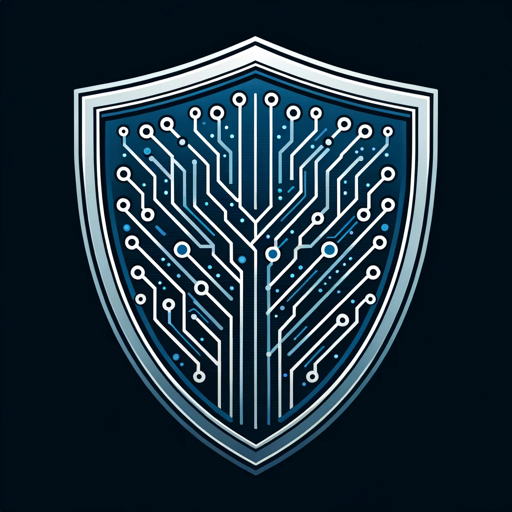Threat Modeling Companion-AI-driven threat modeling tool
AI-Powered Threat Modeling and Mitigation
Given the following System Design Document, provide me with a list of potential threats.
What threats should be considered when deploying a microservice-based system to AWS?
Related Tools
Load More
Red Team Guide
Red Team Recipe and Guide for Fun & Profit.

Red Team Mentor
A mentor for aspiring red team professionals, offering advice, hints, and tool knowledge.
Threat Modelling
A GPT expert in conducting thorough threat modelling for system design and review.

Cybersecurity Requirements Guide
I'll help you write cybersecurity requirements!

Threat Model Companion
Assists in identifying and mitigating security threats.

CTF Companion
Assist in CTF (Capture The Flag) competitions
20.0 / 5 (200 votes)
Introduction to Threat Modeling Companion
The Threat Modeling Companion is a specialized tool designed to provide an exhaustive and structured analysis of threats, attack scenarios, and mitigations for any system described by the user. It is crafted to assist security professionals, developers, and IT administrators in identifying potential security threats and vulnerabilities within their systems, thereby helping to enhance the overall security posture. By leveraging detailed threat modeling techniques, the Threat Modeling Companion offers a comprehensive approach to understanding and mitigating risks associated with various systems and architectures. Examples of its application include assessing the security of cloud-native environments, identifying vulnerabilities in mobile applications, and evaluating the threat landscape of SaaS platforms.

Main Functions of Threat Modeling Companion
Threat Identification
Example
Identify potential threats in a Kubernetes cluster.
Scenario
For instance, in a Kubernetes cluster, the tool can identify threats such as compromised images in a registry, malicious admission controllers, and privilege escalation through service account tokens.
Attack Scenarios Analysis
Example
Analyze attack scenarios for mobile applications.
Scenario
The tool examines various attack surfaces in mobile applications, such as user credentials, app integrity, and API vulnerabilities, providing detailed insights into how attackers can exploit these areas.
Mitigation Strategies
Example
Suggest mitigations for identified threats.
Scenario
Upon identifying threats in a SaaS platform, the tool offers mitigation strategies such as implementing multi-factor authentication, adhering to the principle of least privilege, and securing API endpoints to prevent unauthorized access.
Ideal Users of Threat Modeling Companion Services
Security Professionals
Security analysts and consultants can use the Threat Modeling Companion to perform detailed threat assessments, helping organizations understand and mitigate potential security risks in their systems.
Developers and IT Administrators
Developers and IT admins can leverage the tool to integrate security into the development lifecycle, ensuring that vulnerabilities are identified and addressed early in the design and implementation stages. This proactive approach helps in building more secure applications and infrastructure.

How to Use Threat Modeling Companion
1
Visit aichatonline.org for a free trial without login, no need for ChatGPT Plus.
2
Ensure you have a clear understanding of the system or application you want to analyze, including its architecture, components, and data flows.
3
Input relevant details about your system into the Threat Modeling Companion to get a structured analysis of threats, attack scenarios, and mitigations.
4
Review the generated threat model, which includes detailed descriptions of risks, potential attack scenarios, and suggested mitigations.
5
Implement the suggested mitigations and continuously monitor and update your threat model as your system evolves and new threats emerge.
Try other advanced and practical GPTs
Kaamelott GPT
AI-powered Kaamelott Quote Generator

Bubble Page UX/UI Wizard
AI-powered UX/UI design feedback

KubeGPT
AI-powered assistant for Kubernetes and Go

Logo Factory
AI-powered logo creation made simple

Alt-Text Generator Assistant
AI-powered alt text for accessibility

AI Tools Finder
Discover the best AI tools for every task

Document Format Converter
AI-powered document conversion made easy.

Tyler
AI-powered coding assistant for developers.

Prompt & Pixel Artisan
AI-powered tool for artistic image creation

Apple Accelerate
AI-powered high-performance computing.

SNet Image-to-Vox
Transform images into voxel art with AI

PokerGPT
AI-powered poker strategy for all levels

- Risk Assessment
- Compliance Check
- Threat Analysis
- Vulnerability Management
- Security Planning
Threat Modeling Companion Q&A
What is Threat Modeling Companion?
Threat Modeling Companion is an AI-powered tool designed to provide detailed threat analysis, attack scenarios, and mitigations for any system described by the user. It helps identify potential security risks and suggests appropriate countermeasures.
How does Threat Modeling Companion help in securing my system?
By analyzing the architecture, components, and data flows of your system, Threat Modeling Companion identifies potential threats and provides detailed attack scenarios along with mitigations, helping you to proactively address security vulnerabilities.
What kind of systems can Threat Modeling Companion analyze?
Threat Modeling Companion can analyze a wide range of systems, including web applications, mobile apps, cloud-native architectures, and more. It provides tailored threat modeling based on the specific characteristics of each system.
Do I need any special knowledge to use Threat Modeling Companion?
While a basic understanding of your system's architecture and security concepts is helpful, Threat Modeling Companion is designed to be user-friendly and provides clear, actionable insights without requiring deep technical expertise.
Can Threat Modeling Companion be used for compliance purposes?
Yes, Threat Modeling Companion can help in meeting compliance requirements by identifying and addressing security risks in your system, ensuring that you adhere to relevant security standards and regulations.